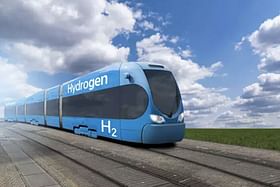Vedanta-owned Sterlite Copper has come out with a fresh expression of interest (EoIs) for supply of raw materials as part of its preparatory measures to restart production at its Thoothukudi unit in Tamil Nadu.
The EoI for procurement includes materials like 1.4 million metric tonne (MT) per annum of copper concentrate, 700,000 MT of imported thermal coal, 700,000 MT of rock phosphate, 60,000 MT of petroleum products, 7,000 MT of liquefied petroleum gas, 120,000 MT of quartz fines, 42,000 MT of quartz chips, 20,000 MT of limestone among other.
Earlier on 12 June, the Company had invited EoIs for carrying out plant ‘restart activities’ – the plant was shut down in May 2018 following an order by the Tamil Nadu Pollution Control Board (TNPCB).
The scope of that EoI included safety assessment and audit of the structures and building, repair and rectification, replacement and commissioning of plant and machinery to enable achieving the designed capacity.
Floating these tenders is considered a standard procedure due to the lengthy timeline involved in procuring and deploying the materials and resources needed to restore and restart the plant.
India’s Largest Plant
Sterlite Copper plant was set up in 1996 at Thoothukudi (Tuticorin) as a zero-liquid discharge plant. This integrated Copper smelter and Refinery plant has a capacity of 4,00,000 Metric Tonnes Per Annum (MTPA) with another 4,00,000 MTPA under expansion.
When the plant was operational, it had been catering up to 40 per cent of India’s demand for refined copper and was the single largest producer of Sulphuric acid and Phosphoric acid in South India.
Further, the plant was the largest employer in Thoothukudi providing employment to over 5,000 people directly and to another 25,000 indirectly through the value chain and contributed around Rs 2,500 crore to the State’s exchequer.
The smelter was closed on 28 May 2018 on orders from the Tamil Nadu government following the death of 13 persons when police opened fire on villagers protesting the pollution emanating from the factory.
Vedanta then approached the National Green Tribunal (NGT), which granted permission to reopen the plant in a December 2018 verdict. However, the Tamil Nadu government swiftly appealed to the Supreme Court, resulting in a stay on the NGT order.
Subsequently, in April this year, the three-member Supreme Court Bench headed by Chief Justice of India Justice DY Chandrachud allowed Sterlite Copper to carry out the upkeep of the plant.
The court ruling paved the way for the company to get access to the plant for upkeep works, following which the June 12 EoI was floated for upkeep and maintenance of the unit.
Failed Attempt
In a surprising move, the Vedanta Group in June 2022 had invited expression of interest for the sale of its copper plant along with its other units.
Anil Agarwal-owned Vedanta, however, dropped plans to sell its copper smelter at Tuticorin due to poor response to its attempt to find a credible suitor for the plant.
Local Resources
As part of its effort to engage with local community during the restart process, the Company intends to engage with local contractors and offer jobs to local people.
“Local suppliers from Thoothukudi and other parts of Tamil Nadu will be given preference. Vendors with relevant experience, expertise, financials, delivery capabilities and strong commitment to environmental sustainability are invited to participate,” the 12 June EoI said.
Further the EoI stipulates that interested contractors should have potential to employ upto 4000 individuals in and around Thoothukudi for deployment at Sterlite Copper in various categories ranging from highly skilled to unskilled.
What Next
Copper is the third most used industrial metal after steel and aluminium.
The government’s emphasis on infrastructure development, combined with a robust resurgence in economic activities across various sectors such as real estate, consumer durables, and electric vehicle manufacturing, has significantly boosted the demand for the red metal.
India used to be a net exporter of copper until FY18 when the Tamil Nadu plant was shut down and since then the country has become net copper importer for a fifth year in a row.
The country’s copper import in FY 21 and FY 22 stood at 2,38,483 tonnes and 2,38,694 tonnes, respectively. However, copper imports of 2,75,341 tonnes in FY23 were still lower than the pre-Covid high of 3,57,423 tonnes recorded in FY20.
London-based Vedanta Group is now making one last-ditch effort to restart the plant under the Supreme Court supervision as various green energy projects happening in India are set to boost domestic copper demand.
This plant which is likely to restart operations if a Supreme Court verdict goes in favour of the company, will alleviate the copper supply crisis and contribute to India’s green growth objectives.




















